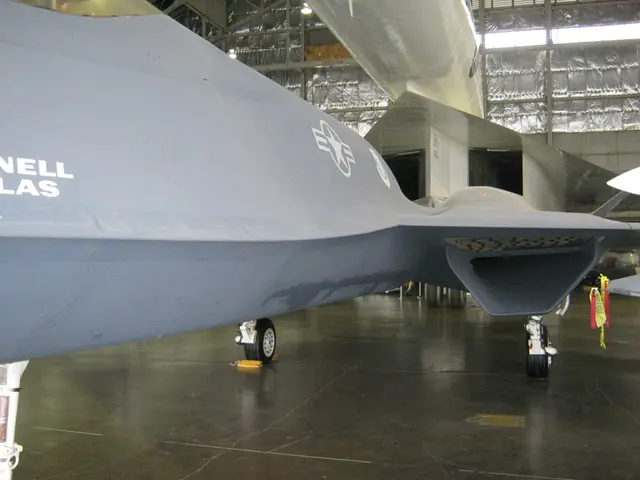Improved Optical Coatings for Superior Functioning in Aircraft and Military Applications
Optical coatings are thin layers of materials applied to optical components like lenses, mirrors, and filters, playing a crucial role in various aerospace and defense applications. The choice of coating and substrate depends on factors such as performance criteria, transmitted and reflected wavelengths, angle of incidence, cost, and range of environmental exposure.
Multifunctional Enhancements
Optical coatings offer multiple benefits, including optical clarity, electrical conductivity, electromagnetic shielding, durability under extreme conditions, and stealth. These enhancements enable advanced performance and reliability of a wide range of critical optical and electronic systems.
In head-up displays (HUDs) and control panels, coatings like Indium Tin Oxide (ITO) combined with anti-reflection layers provide transparent conductivity and minimize optical signatures for stealth and visibility under various conditions. Optical coatings also enable electromagnetic interference (EMI) shielding without compromising transparency, crucial for protecting sensitive electronic and sensor equipment from electromagnetic noise and lightning strike risks.
Coatings provide anti-icing and erosion resistance through specialized metal and alloy coatings, maintaining operational reliability in harsh aerospace environments. They also improve wear resistance and tribological properties, essential for next-generation aircraft engines and systems exposed to vibration and friction stresses.
In defense, coatings help reduce detectability by absorbing electromagnetic waves, enhancing stealth capabilities. Optical coatings are vital in night vision, thermal imaging, and fiber optic systems, enhancing image quality, ruggedness, and compactness of tactical and airborne vision devices. They also protect optics from abrasion, humidity, and extreme temperatures, ensuring long-term stability and performance in mission-critical environments.
Aerospace Applications
In aerospace communications and sensor systems, coatings support high optical transmission and reliability needed for precise data transmission and reception. Optical coatings are used in aerospace systems to increase the physical and thermal durability and optical performance of components used in satellite imaging and avionics.
Cevians' Expertise
Cevians, a company specializing in thin film coated optics, delivers tailored solutions that optimize performance for mission-critical aerospace and defense applications. They have extensive expertise in thin films, precision deposition, and component integration. Precise deposition techniques like Physical Vapor Deposition (PVD) or Chemical Vapor Deposition (CVD) are used to create thin film coatings.
Cost Considerations
The costs of optical coatings are determined by factors such as coating complexity, number of layers, deposition materials, methods, and substrate type. Qualification, assembly, and testing of high-performance optics also impact the overall production costs.
Conclusion
Optical coatings are crucial in aerospace and defense applications for high-efficiency performance and long-term reliability. To learn more about Cevians' optical products, visit their website.
- Cevians, a company specializing in thin film coated optics, provides tailored solutions that optimize performance for various aerospace applications, such as finance, industry, and aerospace, since they are vital for reducing detectability, improving durability under extreme conditions, enabling stealth, enabling electromagnetic interference (EMI) shielding, and increasing the physical and thermal durability of components in aerospace communications and sensor systems, satellite imaging, and avionics.
- In finance and investment for the aerospace industry, understanding the importance of optical coatings can bring significant returns, as these thin layers of materials play a crucial role in various aerospace and defense applications that bring multiple benefits, including optical clarity, electrical conductivity, electromagnetic shielding, durability under extreme conditions, and stealth - all of which contribute to advanced performance and reliability of a wide range of critical optical and electronic systems, ultimately leading to improvements in overall system efficiency and longevity.








